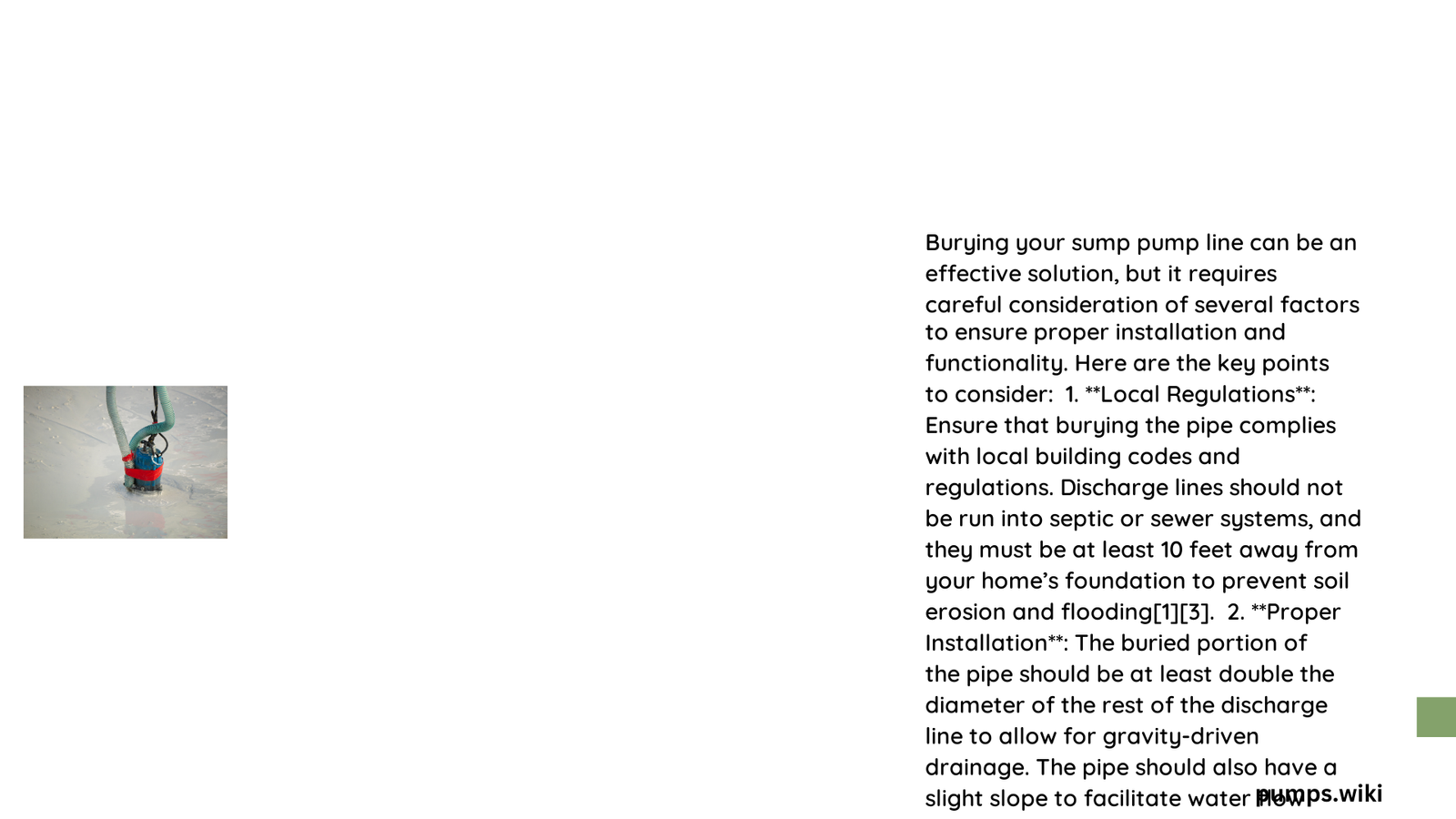Homeowners often wonder about the best method to manage their sump pump discharge line. Burying the line can protect it from damage, prevent freezing, and improve yard aesthetics. However, proper installation requires careful consideration of local regulations, soil conditions, drainage requirements, and potential challenges to ensure effective water management and prevent potential foundation issues.
Can You Legally Bury a Sump Pump Discharge Line?
Burying a sump pump discharge line is possible, but it requires adherence to specific guidelines and local regulations. Homeowners must consider several critical factors before installation:
What Are the Primary Considerations for Burial?
- Frost Line Depth
- Typical burial depth: 5-6 feet below ground
- Varies by geographic region
-
Prevents pipe freezing during winter months
-
Local Building Codes
- Mandatory permit requirements
- Specific installation regulations
- Potential inspection mandates
What Pipe Materials Work Best?
| Material | Pros | Cons |
|---|---|---|
| PVC | Durable, lightweight, corrosion-resistant | Can crack in extreme temperatures |
| ABS Plastic | Flexible, strong, freeze-resistant | Slightly more expensive |
| HDPE | Extremely durable, long-lasting | Requires specialized connections |
How Deep Should the Discharge Line Be Buried?
The ideal burial depth depends on several factors:
- Climate Zone: Colder regions require deeper burial
- Frost Line Depth: Typically 5-6 feet in northern states
- Soil Composition: Clay or rocky soils might require different approaches
What Drainage Solutions Exist?
Homeowners have multiple drainage options:
- Lawnscape Outlet: Ideal for sloped yards
- Lawnscape Bubble Pot: Best for flat terrain
- Underground Drainage Field: Comprehensive water dispersal system
What Installation Steps Are Crucial?
Preparation Phase
- Obtain necessary permits
- Survey yard topography
- Identify optimal discharge location
- Gather required tools and materials
Excavation Process
- Mark discharge line path
- Dig trench below frost line
- Ensure consistent downward slope
- Add gravel base for drainage
Pipe Installation
- Use recommended pipe diameter (1.5 inches)
- Apply proper slope gradient
- Secure connections
- Test water flow before backfilling
What Potential Challenges Might Arise?
- Soil Complexity: Rocky or clay-heavy terrain
- Drainage Limitations: Flat yard configurations
- Freezing Risks: Inadequate burial depth
- Potential Blockages: Sediment accumulation
Cost Considerations
Average installation costs range:
– Basic installation: $350 – $500
– Complex setups: $700 – $1,200
– Additional features (IceGuard): $200 – $400
Professional Recommendations
- Consult local building authorities
- Consider professional installation
- Perform annual maintenance
- Monitor discharge line performance
Final Insights

Burying a sump pump discharge line requires meticulous planning, understanding local regulations, and implementing proper installation techniques. While DIY is possible, professional guidance ensures optimal performance and compliance.
